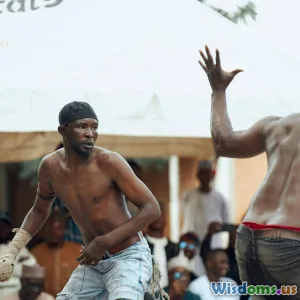
Behind the Scenes at Fashion Weeks Around the Globe
10 min read Explore the fascinating behind-the-scenes world of global fashion weeks, unveiling the intricate preparation, key players, and unique cultural impacts. (0 Reviews)
Behind the Scenes at Fashion Weeks Around the Globe
Fashion weeks aren’t merely glamorous displays of the latest trends showcased on runways; they represent complex, high-pressure productions that bring together a broad spectrum of creative talents and logistical masterminds. Beyond the lights, the music, and the exquisite garments lies a whirlwind of coordinated efforts, strategic decisions, and cultural dialogue that shape these events into global phenomena. This article takes you on an in-depth journey behind the scenes of fashion weeks worldwide, uncovering the unseen craftsmanship, unique challenges, and celebrated successes that define these iconic industry moments.
The Culture and Context of Fashion Weeks
Fashion weeks are held in numerous cities globally, but the 'Big Four'—New York, London, Milan, and Paris—dominate the conversation due to their longstanding historic relevance and profound industry impact.
New York Fashion Week: The Commercial Powerhouse
Known for its energetic pace and commercial sensibility, New York Fashion Week (NYFW) is often considered the gateway for designers targeting a broad consumer market. Beyond the catwalks at venues like the Armory or Spring Studios, backstage areas buzz with hair stylists, makeup artists, and dressers fine-tuning every look. Designers such as Marc Jacobs and Michael Kors have emphasized the importance of accessibility during NYFW. According to a 2022 CFDA report, approximately 65% of NYFW designers focus heavily on ready-to-wear collections that promptly translate into retail sales.
Paris Fashion Week: The Artistic Epicenter
Paris is arguably the artistic heart of fashion, renowned for couture and avant-garde presentations. Behind the intricate sets and elaborate gowns lies a team comprising pattern makers, embroiderers, and milliners, often laboring months in advance. Coco Chanel once said, "Fashion fades, only style remains the same." The ateliers in Paris embody this sentiment, producing master craftsmanship that preserves and evolves historical techniques. The Fédération de la Haute Couture reports that Paris Fashion Week involves over 100,000 professionals engaged in show production — indicating the scale of human effort involved.
Milan Fashion Week: The Italian Flair for Excellence
Milan balances tradition and innovation. Italian fashion houses like Gucci and Prada bring attention not only through design but also by focusing intensely on fabric quality and manufacturing precision. Milanese fashion weeks require impeccable coordination among artisans who often operate independently, such as leatherworkers and tailors, reflecting Italy’s deeply rooted artisan culture. An interesting fact is that around 75% of Italian textile industry production is absorbed during Milan Fashion Week, illustrating the event's economic significance.
London Fashion Week: The Hub of Experimentation
London is known for championing emerging talent and experimental designs. Supported by the British Fashion Council, the event serves as an incubator for cutting-edge ideas. Backstage at London shows, where often digital technologies and sustainable materials meet, creative teams face the challenge of quick turnarounds and tight budgets. Reports highlight that up to 40% of designers at London Fashion Week utilize sustainable methods to align with environmental goals, making it a forward-thinking hub in the international fashion calendar.
The Backbone of Fashion Weeks: The Backstage Dynamics
"If the runway is the heart, backstage is the brain," says Pat McGrath, one of the world’s most influential makeup artists. The backstage realm is where the seamless fusion of art, science, and management occurs.
Model Casting and Preparation
Casting involves a meticulous selection process usually weeks before the show. Casting directors collaborate closely with designers to choose models that embody the vision and diversity of the collection. Statistics from The Model Alliance reveal that casting takes nearly 3–4 weeks for each major fashion week, reflecting the intense scrutiny and planning.
Models must attend fittings, hair and makeup trials, and rehearsals. The process is a blend of physical endurance and mental preparation, with some runway walks requiring models to carry complex designs gracefully while managing last-minute alterations.
Hair and Makeup Innovation
Leading beauty brands and independent artists often collaborate to create trendsetting looks. These efforts often set standards for the rest of the beauty industry for the following seasons. For instance, the 2019 Dior Spring/Summer show introduced a now-iconic ‘no-makeup’ makeup look that spurred a global craze toward natural aesthetics.
The backstage environment is filled with precision; every brush stroke and hairpin placement is timed and measured. Large shows deploy over 30 artists to prepare upwards of 100 models in as little as two hours.
Technical and Logistical Mastery
Lighting technicians, sound engineers, stagehands, and production managers synchronize to choreograph a flawless show. The Paris 2020 runway’s 360-degree setup involved 120 production crew members and state-of-the-art projection technologies that immersed attendees in thematic storytelling.
Logistics also extend to securing sponsorships, media credentials, crowd management, and accommodating high-profile attendees under stringent time constraints.
Beyond the Runway: Fashion Week’s Role in Industry and Economy
Fashion weeks generate tremendous economic activity. According to the British Fashion Council, London Fashion Week contributed approximately £100 million to the UK economy in 2019 alone, factoring in hotel bookings, dining, and local business upticks.
Moreover, these events ignite social conversations around sustainability, inclusivity, and cultural identity. For example, the 2023 Shanghai Fashion Week prominently featured eco-conscious brands and incorporated augmented reality (AR) to enhance viewer engagement, signaling a tech-forward shift.
In addition to economic impact, fashion weeks serve as barometers of cultural shifts and have become platforms for social advocacy—illustrated by designers incorporating messages about gender fluidity, racial equality, and climate change into their collections.
The Global Ripple Effect: Influence and Innovation
Emerging Fashion Weeks
Cities like Tokyo, São Paulo, and Cape Town are establishing vibrant fashion weeks, which blend local heritage with contemporary flair. Tokyo Fashion Week, for instance, is celebrated for its embrace of streetwear and technological integration, such as smart fabrics shown by innovators like Issey Miyake.
Digital Revolution
COVID-19 accelerated the move to digital presentations, with many fashion weeks adopting live streams and virtual reality runways to expand viewer access. The 2021 Paris Men’s Fashion Week digital-only format reported an audience increase of 75% over physical shows, underscoring a transformative shift in accessibility and outreach.
Conclusion
Fashion weeks around the globe are far more than fleeting spectacles of glamour. They are meticulously orchestrated productions involving empowered teams, artisans, and visionaries reflecting societal, technological, and artistic evolutions. From the bustling backstage areas where creativity meets strategy, to the catwalks that forecast future trends, these events are crucial cultural institutions. Understanding the behind-the-scenes intricacies enriches appreciation not only for the garments but for the sheer human endeavor and innovation sewn into every thread of the fashion weeks’ narrative.
Next time you watch a runway show or scroll through fashion week highlights, remember: beneath the surface lies a symphony of preparation, passion, and progress making fashion an unstoppable global force.
References
- CFDA, State of Fashion 2022 Report
- Fédération de la Haute Couture et de la Mode, Paris Fashion Week Stats 2020
- British Fashion Council, Economic Impact Studies 2019
- The Model Alliance, Casting Industry Reports
- Interviews and statements from Pat McGrath, Coco Chanel archives
- Industry news: Vogue Business, Business of Fashion
- Shanghai Fashion Week Official Releases
- Tokyo Fashion Week tech integration features
Rate the Post
User Reviews
Popular Posts
















